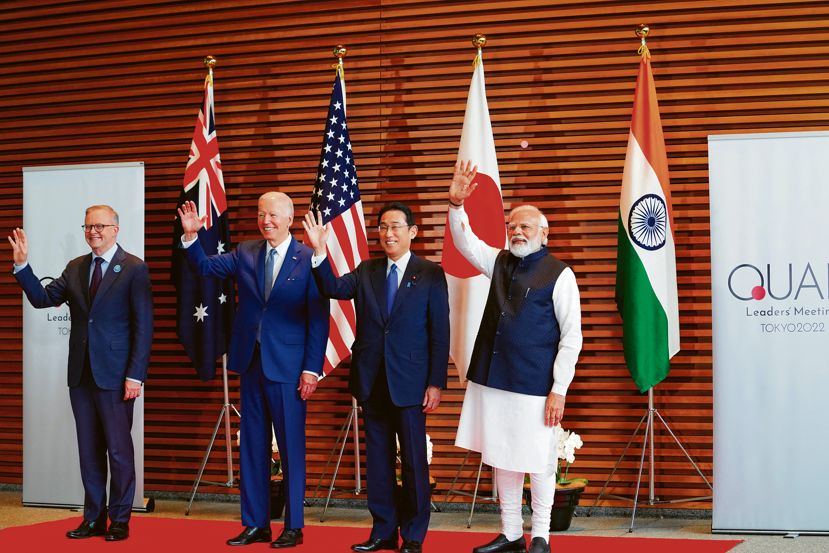From Histrionics to Hysteresis: White House Change, Middle East and India
The swearing-in of US President Joe Biden has unleashed a speculative frenzy about the likely changes in the US foreign policy in its wake. One of the regions to be most affected by this transition is the Middle East – where Trump Presidency upended the longstanding US foreign policy creating several new paradigms: from shifting the US embassy to Jerusalem to “Deal of the Century” and from withdrawing from JCPOA to fostering normalisation between Israel and four Arab countries. Some foreign policy hacks now expect the Biden administration to quickly “reset” the policy back to the more traditional, predictable and “balanced” norms spearheaded by the State Department.
However, a more granular analysis of the possible course of the Biden foreign policy for the region would see changes, if any, to be more glacial and not necessarily in the reverse direction. There are several reasons for this conclusion. Firstly, it can be plausibly argued that the reference point to look for the new Biden regional policy should not be 2016, but 2008 when Obama-Biden Presidency similarly inherited a different Republican administration’s Middle East policy run by the so-called neo-Cons – a bunch perhaps even more disruptive for the region than Mr Trump. Despite strong public misgivings about the US invasion of Afghanistan and Iraq, the Obama-Biden administration chose to make haste slowly and incrementally. During the next two terms, it pursued a nuanced low-key reactive foreign policy avoiding regional entanglements.
Twelve years later, Biden administration is also likely to discover that four years of high-adrenaline Trump diplomacy has created facts in the Middle East which may be harder to delete or reverse. Although this energetic and transactional binary diplomacy did demolish several shibboleths, its basic structure remains largely intact though the debris created were neither removed nor replaced.
Before we divine the future course of US Middle East diplomacy some axioms are needed: Firstly, during first few months, the incoming administration would be preoccupied with urgent domestic agenda comprising of containing the Covid-19 pandemic, resuscitating the US economy and healing the socio-political divisions. Secondly, in its foreign policy domain, Biden Presidency would likely prioritise management of frictions with China and Russia, resetting ties with the EU, re-engaging with the multilateral institutions and issues such as WHO, WTO, climate change, etc over the Middle East issues. Therefore resetting the diplomatic clock on the Middle East is likely to take time and efforts, particularly as Trump diplomacy pursued a “scorched earth” regional policy towards the end designed to thwart any reversal.
In specific terms, Biden presidency has avowed its intention to rejoin the JCPOA with Iran. But such a move may face stiff opposition both within (from the Congress and the Jewish lobby) and externally from moderate Arab states and Israel. The opponents may seek to expand the agreement to include curbs on Iranian WMDs, missile proliferation, regional surrogacy of various Shia groups, etc. As these aspects are integral to Iran’s security doctrine, Tehran is unlikely to agree to such curbs. On its part, Tehran may seek early lifting of the US economic sanctions. There being no daylight between them, it would be difficult if not impossible to have a grand bargain satisfying all the stakeholders. While alternative JCPOA can be attempted, it would require painstaking diplomacy and is likely to leave many unhappy.
On other vexing regional perennial Israel-Arab dispute, even as the “Deal of the Century” was dead on arrival, the recent developments have shifted the dynamic in Israel’s favour. Unless the Palestinian side shows realism, it is hard to see how Biden administration being able to recreate a viable peace process.
While the regional conflicts in Syria, Iraq, Libya and Yemen seem to be nearing their respective logical ends, their political solutions would require the American diplomatic engagement. Biden administration would still need to salvage the situation in Afghanistan, where resurgent Taliban perceive the US and NATO troop withdrawal as its victory and a free pass to Kabul. This may raise the competing unedifying prospects of either re-Talibanisation of the country or stateless anarchy which al-Qaeda and Daesh are certain to exploit.
One of the most significant differences the Biden administration is likely to make to the region would be outside the political domain altogether – in the energy sector. It has vowed to return to Paris Climate Accord and to invest heavily in clean technologies. It is likely to be less enthusiastic about fracking and coal mining. While US progress towards clean energy may cut the oil consumption in the mid-to-long run, reduction in fracking and coal burning may lead to a greater global reliance on OPEC+ producers and push the oil prices higher.
Internationally, the long gestation of Biden policy towards the Middle East may encourage the regional stakeholders to forge alliances both within the region and with outside powers, such as China, Russia and India. Leveraging the unfolding geostrategic opportunities should therefore be a priority for our policy towards this extended neighbourhood where our vital national interests are involved.
Any high school student is aware of the Hysteresis – a lingering magnetism even after the electric current stops. Analogously, while Trump’s long shadow over the Middle East would soon recede, its hysteresis effect is likely to last for quite a while longer.
(The views expressed are personal)























